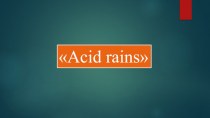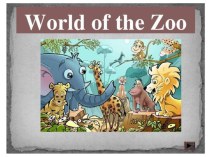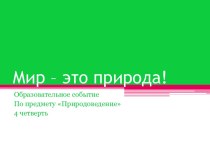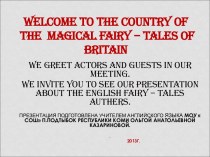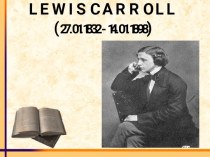- Главная
- Разное
- Бизнес и предпринимательство
- Образование
- Развлечения
- Государство
- Спорт
- Графика
- Культурология
- Еда и кулинария
- Лингвистика
- Религиоведение
- Черчение
- Физкультура
- ИЗО
- Психология
- Социология
- Английский язык
- Астрономия
- Алгебра
- Биология
- География
- Геометрия
- Детские презентации
- Информатика
- История
- Литература
- Маркетинг
- Математика
- Медицина
- Менеджмент
- Музыка
- МХК
- Немецкий язык
- ОБЖ
- Обществознание
- Окружающий мир
- Педагогика
- Русский язык
- Технология
- Физика
- Философия
- Химия
- Шаблоны, картинки для презентаций
- Экология
- Экономика
- Юриспруденция
Что такое findslide.org?
FindSlide.org - это сайт презентаций, докладов, шаблонов в формате PowerPoint.
Обратная связь
Email: Нажмите что бы посмотреть
Презентация на тему Non-discrete effects in language
Содержание
- 2. The problemWe tend to think about language
- 3. Simple example: morpheme fusionдетский det-sk-ij ‘children’s, childish’ Root-Suffix-Ending [deckij] suffix deck-ij root
- 4. Similar exampes abound on all lingustic levelsPhonemes:
- 5. ParadigmaticsThe same problem applies to paradigmatic boundaries,
- 6. SemanticsX said smth (Zaliznjak 2006: 186)‘X uttered
- 7. Diachronic changeRussian писать pisat’ ‘write’Funny slangish use:popisal
- 8. Language contactThe Baltic language Prussian, spoken in
- 9. Intermediate conclusionLanguage simultaneouslylongs for discrete, segmented structuretries
- 10. Possible reactions“Digital” linguistics (de Saussure, Bloomfield, Chomsky...):More
- 11. Cognitive scienceRosch: prototype theoryLakoff: radial categoriesA is
- 12. My main suggestionIn the case of language
- 13. Various kinds of structures▐focal point 1focal point 2 discrete structure▐continuous structurefocal structure1212
- 14. Still more realistic: amoeba structure
- 15. Examples▐focal point 1focal point 2det sksaid told*pis- pis-Prussian GermanSyntagm.Paradigm.Diachr.Lg.contactetc., etc.
- 16. Peripheral status of non-discrete phenomenaWhere does it
- 17. Kant’s puzzleThe role of observer, or cognizer,
- 18. Recapitulation: A paradoxical state of affairsScience
- 19. What to do?We need to develop a
- 20. 1. Start with prosodyProsody is the aspect
- 21. 2. Explore gesticulationIn addition to sound code,
- 22. 3. Employ mathematics appropriate for the “cognitive
- 23. ConclusionJust as we invoke scientific thinking, we
- 24. Скачать презентацию
- 25. Похожие презентации
The problemWe tend to think about language as a system of discrete elements (phonemes, morphemes, words, sentences)But this view does not survive an encounter with reality


![Non-discrete effects in language Simple example: morpheme fusionдетский det-sk-ij ‘children’s, childish’ Root-Suffix-Ending [deckij] suffix deck-ij root](/img/tmb/11/1067476/1ee69f006c3b831728426136d4aab1f6-720x.jpg)





















Слайд 2
The problem
We tend to think about language as
a system of discrete elements (phonemes, morphemes, words, sentences)
this view does not survive an encounter with reality
Слайд 3
Simple example:
morpheme fusion
детский
det-sk-ij ‘children’s, childish’
Root-Suffix-Ending
[deckij]
suffix
deck-ij
root
Слайд 4
Similar exampes abound on all lingustic levels
Phonemes: coarticulation
cat keep
cool
Words: clitics
iz mašiny ‘from the car’
iz ... mašiny
‘from ... the car’iz taksi [is taksi] ‘from the taxi’
Clauses: parcellation
I’ll come, in a minute
These are primarily syntagmatic examples: non-discrete boundaries between linearly arranged units
Слайд 5
Paradigmatics
The same problem applies to paradigmatic boundaries, that
is boundaries between classes, types, or categories in an
inventoryQuestionable phonemes
Russian жюри žjuri ‘jury’
[ž’ur’i]
even though supposedly there is no palatalized [ž’] in Russian (in this position)
Questionable words and clauses
I want [to go]
particle infinitival clause
I wan[na go] ??
cf. жури žuri ‘rebuke’
Слайд 6
Semantics
X said smth (Zaliznjak 2006: 186)
‘X uttered a
sequence of sounds’
‘X meant smth’
‘X expressed his belief in
smth’‘X wanted Y to know smth’
‘X wanted Y to perform smth’
.................
Some of these meanings are shared by X told smth, but some are not
Слайд 7
Diachronic change
Russian писать pisat’ ‘write’
Funny slangish use:
popisal nozhom
‘cut/slashed someone with a knife’, lit. ‘wrote with a
knife’One of the Indo-European etymologies of the root pis- is ‘create image by cutting’
Apparently the ancient meaning of the root, several millennia old, is still present in a marginal usage of the modern verb
Слайд 8
Language contact
The Baltic language Prussian, spoken in this
area until the 16th – 17th century
Vladimir N. Toporov
In
the existing texts Prussian syntax is almost fully copied from German (Luther’s Catechism)In the 18th century, when Prussian was extinct, German-speaking peasants of the area used many Prussian words
Слайд 9
Intermediate conclusion
Language simultaneously
longs for discrete, segmented structure
tries to
avoid it
Non-discrete effects permeate every single aspect of language
This
problem is in the core of theoretical debates about language
Слайд 10
Possible reactions
“Digital” linguistics (de Saussure, Bloomfield, Chomsky...):
More inclusive
(“analog”) linguistics: often a mere statement of continuous boundaries
and countless intermediate/borderline casesignore non-discrete
phenomena or dismiss them
as minor
Ferdinand de Saussure:
language only consists
of identities and differences
the discreteness delusion
a bit too simple-minded
appeal of scientific rigor but extreme reductionism
Слайд 11
Cognitive science
Rosch: prototype theory
Lakoff: radial categories
A is the
prototypical phoneme/word/clause/ meaning...
B, C, and D are less prototypical
representativesWe still need a theory for:
boundaries between related categories
boundaries in the syntagmatic structure
Слайд 12
My main suggestion
In the case of language we
see the structure that combines the properties of discrete
and non-discrete: focal structureFocal phenomena are simultaneously distinct and related
Focal structure is a special kind of structure found in linguistic phenomena, alternative to the discrete structure
It is the hallmark of linguistic and, possibly, cognitive phenomena, in constrast to simpler kinds of matter
Слайд 13
Various kinds of structures
▐
focal point 1
focal point 2
discrete structure
▐
continuous structure
focal structure
1
2
1
2
Слайд 15
Examples
▐
focal point 1
focal point 2
det sk
said told
*pis- pis-
Prussian German
Syntagm.
Paradigm.
Diachr.
Lg.contact
etc., etc.
Слайд 16
Peripheral status of non-discrete phenomena
Where does it stem
from?
Objective properties of language?
I don’t think so
Or, perhaps, properties
of the observing human mind?This directly relates to one of the key issues in The Critique of Pure Reason
Слайд 17
Kant’s puzzle
The role of observer, or cognizer, crucially
affects the knowledge of the world
“The schematicism by which
our understanding deals with the phenomenal world ... is a skill so deeply hidden in the human soul that we shall hardly guess the secret trick that Nature here employs.”NB: Standards of scientific thought have developed on the basis of physical, rather than cognitive, reality
Physical reality is much more prone to the discrete approach
Compared to physical world, in the case of language and other cognitive processes Kant’s problem is much more acute
because mind here functions both as an observer and an object of observation, so making the distinction between the two is difficult
Слайд 18
Recapitulation:
A paradoxical state of affairs
Science is based
on categorization (Aristotelian, “rationality”, “left-hemispheric”, etc.)
The scientific approach is
inherently biased to noticing only the fitting phenomenaIt is like eyeglasses filtering out a part of reality
Addressing another part of it is perceived as pseudo-science, or quasi-science at best
Language is unknowable, a Ding an sich?
Слайд 19
What to do?
We need to develop a more
embracing linguistics and cognitive science that address non-discrete phenomena:
not
as exceptions or periphery of language and cognition but rather as their core
Can we outwit our mind?
Several avenues towards this goal
Слайд 20
1. Start with prosody
Prosody is the aspect of
sound code
that is obviously non-discrete
Example: Sandro V. Kodzasov’s
analysis of formal quantity
iconically depicting mental quantityIt was lo-ong ago. Oh, tha-at’s the reason.
He just left. That’s clear.
Develop new approaches on the basis of prosody, then apply them to traditional, “segmental” language
Слайд 21
2. Explore gesticulation
In addition to sound code, there
is a visual code:
gesticulation and generally “body language”
Michael
Tomasello: in order to “understand how
humans communicate with one another using a
language <…> we must first understand how
humans communicate with one another using natural gestures”Когда он ехал по дорóге, он поравнялся с дéвочкой,
(From the materials of Julia Nikolaeva)
Simultaneously: iconic gestures and pointing gestures
Слайд 22
3. Employ mathematics appropriate for the “cognitive matter”
Methodological
point
1960s: a fashion of “mathematical methods” in linguistics
This did
not bring much fruit, primarily because of the non-discreteness effectsTime for another attempt of bringing in more useful kinds of mathematics
Ongoing project: study of non-categorical referential choice
When we mention a person/object, we choose from a set of options, such as a proper name (Kant), a common name (the philosopher), or a reduced form (he)
This choice is not always deterministic: sometimes both Kant and he are appropriate
Probabilistic modelling and machine learning techniques used to simulate human behavior in non-categorical situations
Слайд 23
Conclusion
Just as we invoke scientific thinking, we tend
to immediately turn to discrete analysis
This is why discrete
linguistics is so popular, in spite of the omnipresence and obviousness of non-discrete effectsThis may be our inherent bias, or a habit developed in natural sciences, or a cultural preference
But in the case of language and other cognitive processes we do see the limits of the traditional discrete approach
It remains an open question if cognitive scientists are able to eventually overcome the strong bias towards “pure reason” and discrete analysis, or language will remain a Ding an sich
But it is worth trying to circumvent this bias and to seriously explore the focal, non-discrete structure that is in the very core of language and cognition

